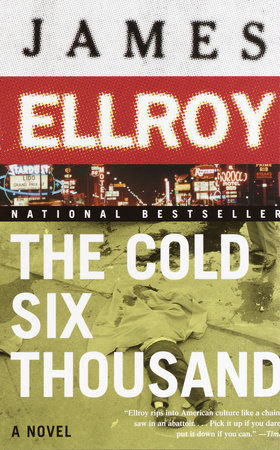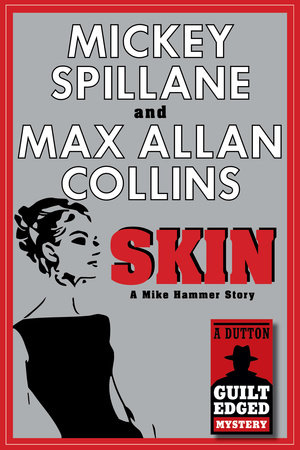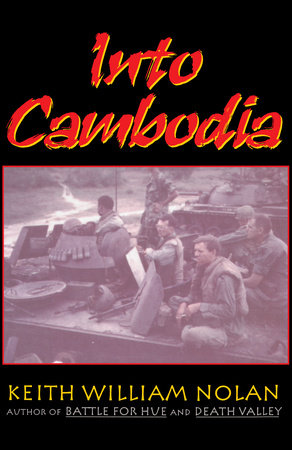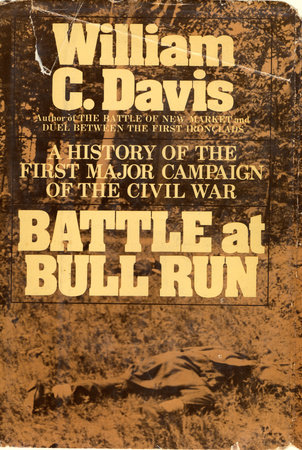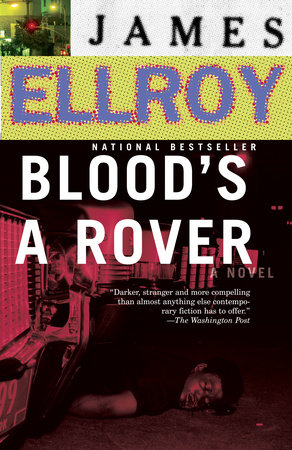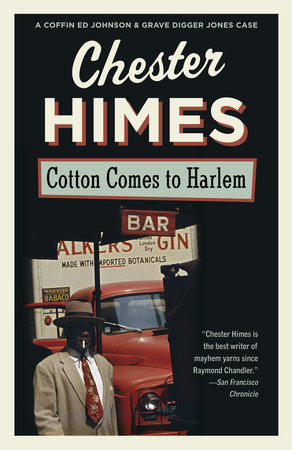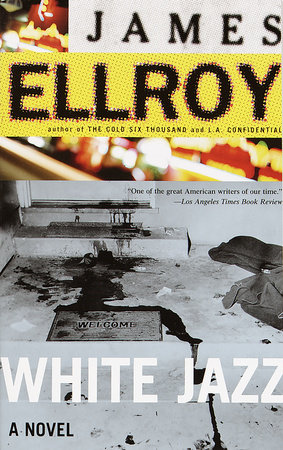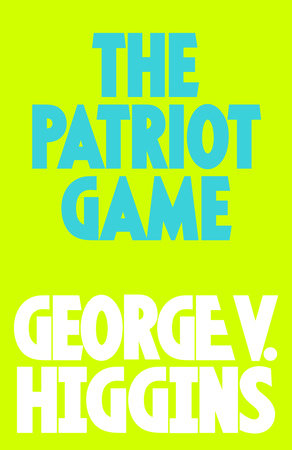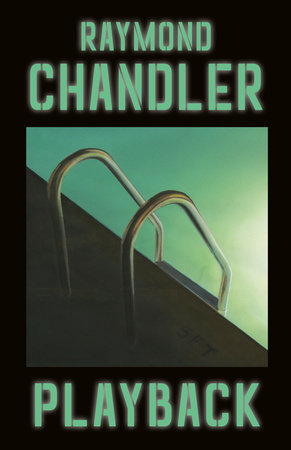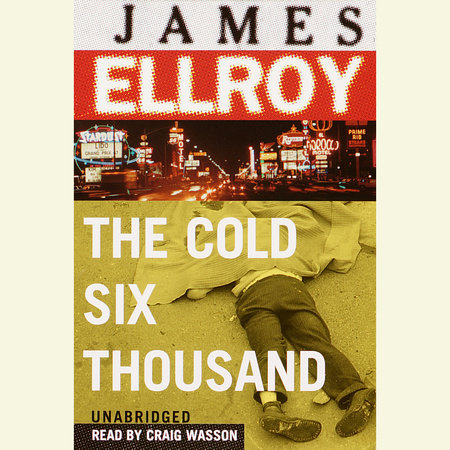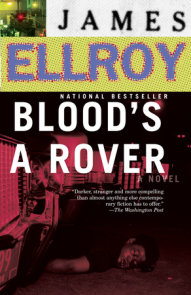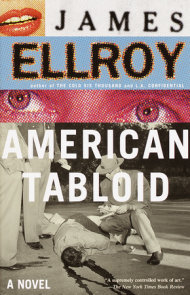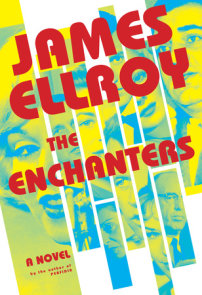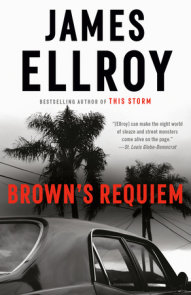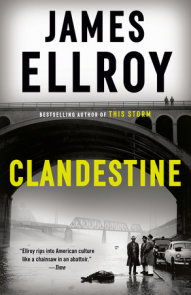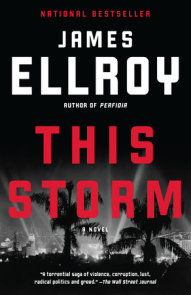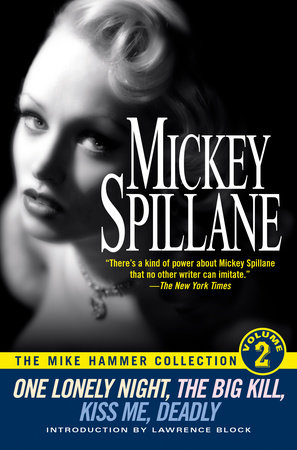Author Q&A
A Conversation with
JAMES ELLROY
author of
THE COLD SIX THOUSAND
Q: In the opening paragraph of American Tabloid you write that "America was never innocent." How does this theme further evolve in The Cold Six Thousand?
A: America was founded on a bedrock of land grabs, slavery, religious extremism, colonial ambition, and genocide. The notion that America was innocent prior to Jack Kennedy’s murder is preposterous; by the rules he lived by, Jack got what he deserved. He took aid from organized crime during the 1960 election; he repaid the debt by siccing his kid brother Bobby on the Mob at large. He betrayed the Cuban exiles at the Bay of Pigs. He pissed off a hot-headed troika of mobsters, exiles and renegade CIA men involved in the Cuban cause. They whacked him for it. His death derived from the perennial motives of money and turf. It was a gaudy homicide that set the stage for the out-of-control America that I portray in The Cold Six Thousand.
Q: So you really think the Mob called the hits on JFK, Martin Luther King Jr, and Bobby Kennedy?
A: I’m convinced that the Mob, in cahoots with Cuban exile and renegade CIA elements, whacked Jack Kennedy. That said, I’m a novelist — and my job is the creation of verisimilitude, not the exposition of literal truth. There is no evidence that the Mob whacked King — and in The Cold Six Thousand, he gets whacked by a cabal of racist provocateurs, ex-FBI men, and right-wing fat cats. I suspect that something like this happened in reality. Again, however, my design is to show the horrible power of like-minded men bent on repression at any cost — which is true to the flow of history in general and of the 1960s especially. Thus I lie/fabricate/condense/extrapolate/guess/hyperbolize and weave to give you that flow and make it convincing. As for Bobby — I’m not sure. Maybe Sirhan Sirhan was a lone wacko; maybe he was assisted in his murderous obsession. It comes down to this: The Cold Six Thousand plausibly exposits the time and the place and the mindset of the bad men who made things happen then.
Q: Why did you choose the events of the 1960’s for a look at American cultures? Why is this time period a point of reference and a point of departure for you?
A: I lived through the ’60s as a youth. I was not politically conscious or in any recognizable way a kid of my time. I sensed, however, the human infrastructure at the base of the great events transpiring. The Cold Six Thousand covers late 1963 to mid-1968. It is the first time an epic-length novel weaves the major strands of American public policy into a cohesive whole – as seen through the eyes of the bad men implementing policy decisions at street level. The JFK hit; the Klan; the FBI’s war on the civil rights movement; CIA men moving heroin out of Vietnam; Howard Hughes’ conquest of Las Vegas; the Martin Luther King and Bobby Kennedy hits. The Cold Six Thousand is a huge canvas – it is the Sistine Chapel of American bad juju.
Q:There’s a fine line between the good guys and the bad guys in The Cold Six Thousand — cons are ex-cops, hit men are ex-FBI, the Justice Department is virtually run by organized crime during J Edgar Hoover’s tenure as FBI Director. Do you truly believe that law enforcement is that corrupt? And at such a high level?
A: Organized crime did not run the Justice Department during J. Edgar Hoover’s tenure. Hoover – the quintessential 20th-century American fiend — was the passive handmaid to the Mob’s designs. Hoover disingenuously contended that the Mob did not exist because he knew he could not prosecute the Mob and win. Hoover’s bete noire — and the one man he could not break — was Martin Luther King. The FBI engaged in a campaign of terror and
employed criminal methods to discredit King and the civil rights movement. In the ’60s, there was a self-serving matrix of bad men in high places, pledged to support a reactionary agenda. In that sense, the Mob, the FBI, the CIA, rogue politicians and conquest-minded business moguls were all as one under the sheets.
Q: You blend fact and fiction, mingling names and faces of the time period with your own characters. How much of the book is based on fact?
A: The Cold Six Thousand is both solidly factual and wholly fictional. The book is scrupulously researched — but utterly reimagined from the standpoint of dramatic viability. My greatest assist I got in preparing the book was the outrageousness of the 1960’s itself. Times of great social change are times of great backlash; hellish misadventures like the Vietnam War spawn provocateurs with dark individual agendas. In The Cold Six Thousand, I got to rewrite the 1960s to my own specifications and explicate the human infrastructure I first glimpsed as a youth.
Q: Everyone in The Cold Six Thousand is fatally flawed. Even Martin Luther King, Jr. is portrayed as having a seedy side. Where are the heroes of the 60s?
A: Martin Luther King, the greatest 20th-century American, was a true hero of the 1960s. His promiscuity was directly related to, and served as a counterbalance to, the terror he experienced during his 13-year tenure as a marked man, from the Montgomery Bus Boycott to the time of his death. King’s social agenda expanded during the last 2 years of his life — almost in the manner of a kamikaze attack on American society. He was physically and morally exhausted. His agenda was a shriek of self-martyrdom. He wanted to alienate as much as he wanted to heal. His long transit of courage brought him to the point of calling forth his own death. As for Robert Kennedy: he was the greatest crimefighter of the American 20th century; his anti-Mob crusade was an Oedipal drama once removed. RFK
was the only male Kennedy who admitted to himself what an evil son-of-a-bitch his father was; he went at the Mob as Joseph P. Kennedy’s proxy. The spellbinding irony: RFK’s Oedipal drama got his brother Jack killed.
Q: What would you say to critics who argue that history shouldn’t be the subject of fiction, that making it so is revisionist, even unethical?
A: I would say, "You’re wrong." I would say that all allegedly factual historical tomes are filters that express the individual viewpoints and prejudices of the author. There are emotional and moral truths to be taken from history — and fictional revisions get to the heart of the individual drama inherent in all great events.
Q: Time Magazine describes your writing style as "taut, telegraphic sentences, subject-verb-kablooey!" How did you develop such tight, graphic language?
A: I write novels about the lowest-level implementers of American public policy. The violence in my language is a direct representation of the violence of their lives. A novelist’s style should serve his subject matter and transform it into art. To be any less than wholly graphic would be demeaning and wrong. The language of bad men is largely the language of racism; to flinch from using racist invective in the actual narrative of a book would be dishonest and would deny racism its true horrible due. Language, style, narrative drive and characterization are a novelist’s basic tools; they must always be deployed to the limits of their power.
Q: What was it like to watch one of your books, LA Confidential, made into a movie?
A: It was a blast. It was a superb movie and it sold me a shitload of books.
Q: Do you have any other books currently in movie production?
A: This July, my novel White Jazz will be filmed on location in Los Angeles. I wrote the screenplay; the director is Robert Richardson; Nick Nolte plays Dave "The Enforcer" Klein; John Cusack plays Junior Stemmons.
Q: Originally, you had promised three books in this series. Is that still the case? If so, can you tell us about the final installment?
A: Yes. American Tabloid is the first volume of my Underworld U.S.A. Trilogy. The Cold Six Thousand is my second. I will soon begin work on the epic third volume — a ghastly tale of political malfeasance and imperialistic bad juju from 1968-1972.
